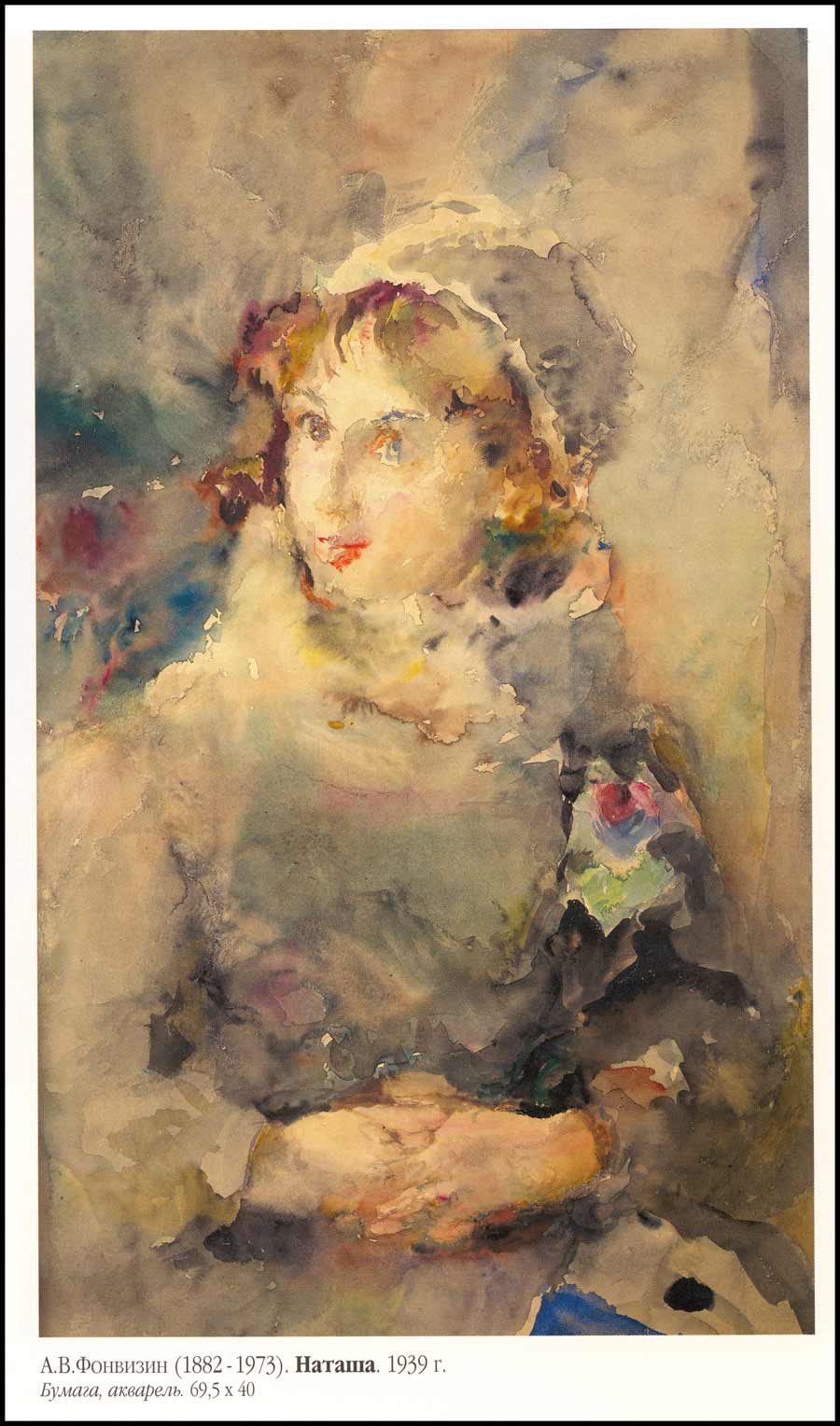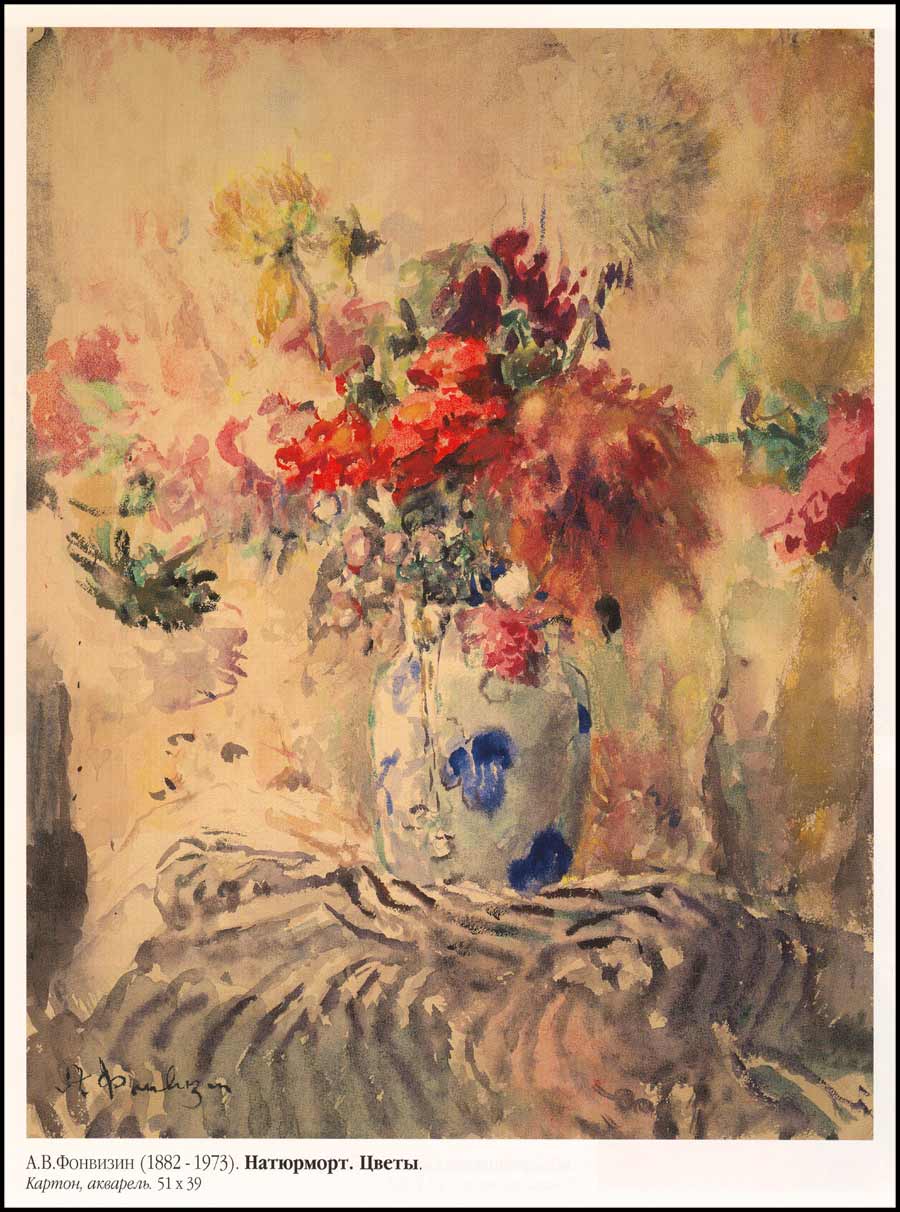I have a small claim to potential fame. Or, rather, a potential claim to fame. I created an article on Artur Fonvizin at the English Wikipedia. I’m rather pleased with myself.
Artur Fonvizin (Артур Владимирович Фонвизин) (1883-1973) was born in Riga (Latvia) in a family of German origin. His last name comes from von Wiesen, a name he used to sign his earliest works. When he joined the Moscow School of Painting, Sculpture and Architecture, he fell in with the avant-garde crowd of Mikhail Larionov and Sergei Sudeikin, who had established the Union of Youth, a subversive artistic organisation. They put up an exhibition without the permission of the school authorities, and were promptly expelled.
Fonvizin is known as a watercolour artist, a Symbolist, a Formalist. During the Great Terror, he was vilified by the Soviet press as a leader of the Gang of Formalists (comprising the Three F’s: Falk, Favorsky and Fonvizin). Watercolour portraits of famous theatre actresses and circus artistes were his forte. His fame stems from the vividness of his application and the easy style of applying paint directly, with no preparatory drawings.
*******
Watercolours became Fonvizin’s chief medium of expression in the 1920s. When his contemporaries moved onto new arts and socialist realism, he began to withdraw into himself. Throughout the establishment and spread of Communist rule in Russia he lived quietly and peacefully, and remained known (despite his various prizes) only to specialists. The wider public had little idea of him: his nuances and subtleties, mastery of colour and expression escaped most viewers.
At first glance, it appeared as though Fonvizin lived his life utterly ignorant of the wars, five-year plans and state terror that surrounded his world. His work continued to be informed by his imagination; he created his own cozy world filled with multidimensional spaces for habitation, and ephemeral characters and objects. But a deeper look reveals that his proud loneliness was the complete opposite of the romantic posing of an artist or heroic ascetic.
Fonvizin was clearly not a strong personality, and it can be said his character was born from the opposite – weakness. The artist Anatoly Slepyshev who knew him well said that he was unable to work as many artists do – from time to time, day by day. Instead, he created works in a rush, in a kind of trance, slaving away to exhaustion, completely using up his spirit, fully immersing himself in his art, leaving no strength for his quotidian life. [1]
*******
Fonvizin is said to have suffered from autism. From early childhood, the external world interested him so little that he didn’t speak for years. Living an isolated life (his father was a forester and the family lived in forest quarters), he only emerged from his self-imposed imprisonment when he encountered the Ciniselli circus for the first time. He not only started to speak, he began to draw. Fairy princesses playing with fiery torches, galloping on mighty horses around the arena forever captured his imagination.
Still, the rest of the external world continued to disinterest him. After joining the Moscow School of Painting, Sculpture and Architecture, he continued along his unobtrusive and meek existence, despite the company of the avant-garde and over-the-top Larionov and Goncharova, enduring their creative scandals. In the future, his interest would be watercolours and a very narrow range of subjects: old-style circuses, still lifes of flowers, portraits of women. He even found his companion in life in that world of the watercolour when he undertook to paint the portrait of the young artist Natalya Malkina.
And throughout his life, it was women who saved him from his troubles. When he was exiled during the war to Karaganda because of his German origins, it was Vera Mukhina who brought him back. Women of the high society of Soviet era simply bowed before him who honestly and realistically painted what he saw. His fairy princesses now were Babanova, Zerkalova, Glizer, Boguslavskaya, Levitina, Tikhomirnova, Plisetskaya …[2]

Portrait of a woman. (1939).

Natasha. (1939).

L. Yumasheva. (1945).

Portrait of a lady in pink.

Still life of flowers.
References
[1] Александр Котломанов, ‘Артур Фонвизин: нежестокий романс‘, Журнал «НоМИ», № 2/2008.
[2] Andrei Kovalev, ‘Watercolours as a form of autism‘, Russian Journal, 28 February 2003.
